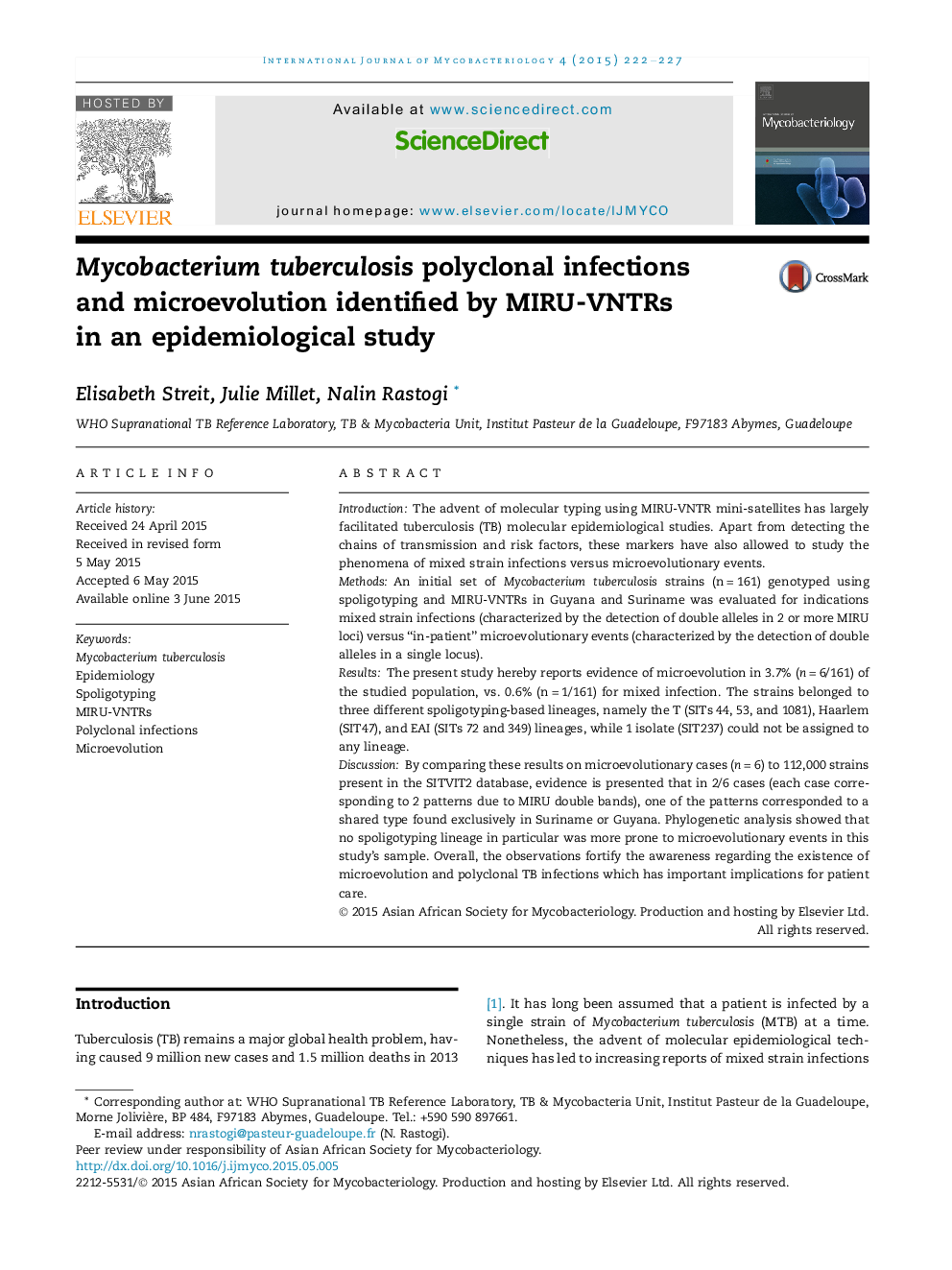| Article ID | Journal | Published Year | Pages | File Type |
|---|---|---|---|---|
| 3405127 | International Journal of Mycobacteriology | 2015 | 6 Pages |
IntroductionThe advent of molecular typing using MIRU-VNTR mini-satellites has largely facilitated tuberculosis (TB) molecular epidemiological studies. Apart from detecting the chains of transmission and risk factors, these markers have also allowed to study the phenomena of mixed strain infections versus microevolutionary events.MethodsAn initial set of Mycobacterium tuberculosis strains (n = 161) genotyped using spoligotyping and MIRU-VNTRs in Guyana and Suriname was evaluated for indications mixed strain infections (characterized by the detection of double alleles in 2 or more MIRU loci) versus “in-patient” microevolutionary events (characterized by the detection of double alleles in a single locus).ResultsThe present study hereby reports evidence of microevolution in 3.7% (n = 6/161) of the studied population, vs. 0.6% (n = 1/161) for mixed infection. The strains belonged to three different spoligotyping-based lineages, namely the T (SITs 44, 53, and 1081), Haarlem (SIT47), and EAI (SITs 72 and 349) lineages, while 1 isolate (SIT237) could not be assigned to any lineage.DiscussionBy comparing these results on microevolutionary cases (n = 6) to 112,000 strains present in the SITVIT2 database, evidence is presented that in 2/6 cases (each case corresponding to 2 patterns due to MIRU double bands), one of the patterns corresponded to a shared type found exclusively in Suriname or Guyana. Phylogenetic analysis showed that no spoligotyping lineage in particular was more prone to microevolutionary events in this study’s sample. Overall, the observations fortify the awareness regarding the existence of microevolution and polyclonal TB infections which has important implications for patient care.
